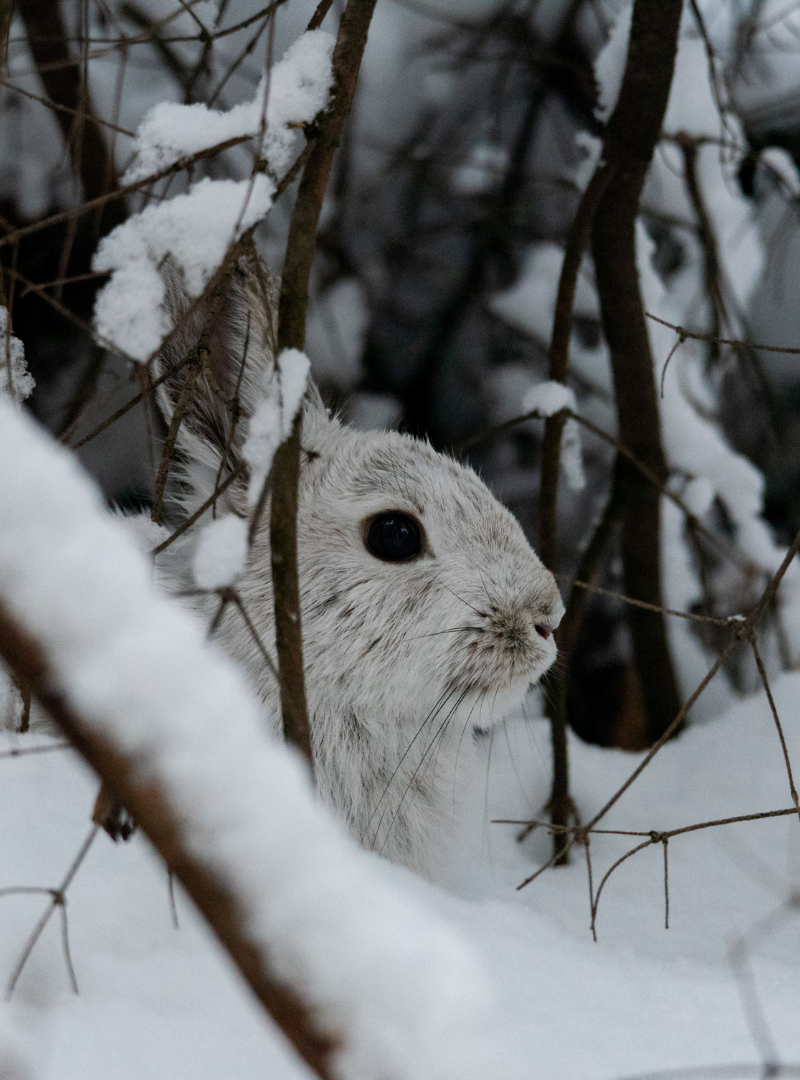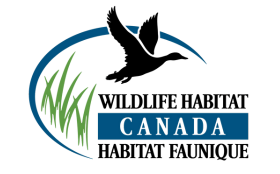Natural Heritage Conservation Program – Land Trusts Conservation Fund (NHCP-LTCF)
Small Grants Program
The 2025-2026 application window is closed.
Overview
In order to be considered for the 2025-2026 NHCP-LTCF Small Grants Program, completed Application Forms and required documentation are to be submitted between May 21, 2025 and September 15, 2025 at 8:00pm (ET). Prospective awardees, please review the Year 7 guidelines for deadlines and important dates below (subject to change).
To be eligible for funding in Year 7, projects must close between April 1, 2025 and *NEW* December 31, 2025.
If you would like to be added to our email list to receive program announcements and updates, please email grants@whc.org.

The Government of Canada is investing a further $90 million to their initial $100 million investment (2019-2023), over the next 3 years in the Natural Heritage Conservation Program (from April 1, 2023, to March 31, 2026) as a continuation of the Budget 2018’s Nature Legacy initiative. This funding will be shared by conservation partners including the Nature Conservancy of Canada, Ducks Unlimited Canada, and Canada’s community and regional land trusts.
The NHCP is a public-private partnership designed to advance privately protected areas in some of the country’s most cherished landscapes.
More specifically, the NHCP aims to achieve the following objectives:
- To contribute to the achievement of the terrestrial and inland water elements of Canada’s target of Canada’s 2020 Biodiversity Goals and Targets;
- To contribute to the protection of habitat for the recovery of Species at Risk Act (SARA) listed species at risk and the prevention of other species from becoming listed under SARA.
The Nature Conservancy of Canada, Ducks Unlimited Canada, Wildlife Habitat Canada and a variety of regional and local land trusts represented by the Alliance of Canadian Land Trusts are working together under the Natural Heritage Conservation Program to support these goals, with a commitment to protect an additional 15,000 hectares of habitat for species at risk.

Wildlife Habitat Canada is providing grant administration services for the Land Trusts Conservation Fund, which is a component of the Natural Heritage Conservation Program. The Land Trusts Conservation Fund will provide approximately $5.08 million annually over three years to support Canadian land trusts in securing private lands and private interests in lands. Note: Canadian federal government contributions cannot be used as matching funds under the NHCP-LTCF program.
This investment in nature is an important step in achieving Canada’s target of conserving a quarter of its lands and a quarter of its oceans by 2025, and toward conserving 30% by 2030.
The NHCP-LTCF program is designed to directly support Canada Target 1 and as such, land funded under the NHCP-LTCF program must count towards objectives for permanent or long-term protection of land, either as a “Protected Area” (PA) or an “Other Effective Area-Based Conservation Measure” (OECM), as defined by Appendix 1 of One with Nature 2019:
Protected Area (PA): A Protected Area is “a clearly defined geographical space, recognized, dedicated and managed, through legal or other effective means, to achieve the long-term conservation of nature with associated ecosystem services and cultural values.” (One with Nature definition, 2019).
Other Effective Area-Based Conservation Measure (OECM)*: An OECM is broadly defined as “a geographically defined area other than a Protected Area, which is governed and managed in ways that achieve positive and sustained long-term outcomes for the in-situ conservation of biodiversity, with associated ecosystem functions and services and where applicable, cultural, spiritual, socio-economic, and other locally relevant values.” (One with Nature definition, 2019).
*If your project involves a unique mechanism for conservation or an OECM, please contact WHC to discuss the details of your project before submitting an application.
Note: Successful applications with projects involving a unique mechanism for conservation or an OECM will require approval by ECCC before a Funding Agreement between WHC and the Applicant can be signed (WHC will facilitate the ECCC request for approval).
A Decision Support Tool exists to provide support in assessing whether or not an area contributes to Canada’s Target. Applicants are encouraged to review the Decision Support Tool and assess their project land using the Decision Support Tool Screening Template for Protected Areas and OECMs to determine whether the area can be counted towards Canada Target.
For further information, see the overview of the Accounting for Protected and Other Conserved Areas.
Year 7 2025-2026
- Eligible projects must close between April 1, 2025 and *NEW* December 31, 2025.
- Eligible project expenses will be those incurred between April 1, 2025 to March 31, 2026.
- Associated project expenses that occurred between April 1, 2022 and March 31, 2026 can be applied to the project as matching funds (provided that the expenses were not paid for with other sources of Canadian federal funds).
Eligibility
To be eligible to apply to the Land Trusts Conservation Program (LTCF), applicants must meet all the criteria below:
- Applicants must be a Canadian Land Trust*;
- Applicants must be a registered Canadian charity; and,
- Applicants must be in compliance or working towards substantial compliance with the Canadian Land Trust Standards and Practices (2019)** or Guide des bonnes pratiques en intendance privée: aspects juridiques et organisationnels, as demonstrated through a Board resolution or confirmed through an attestation by a senior officer of the organization. This includes, in particular, compliance or substantial compliance with Standards 8-12 which address the securement and stewarding of conservation lands.
* A Canadian Land Trust is defined as a not-for-profit conservation organization that, as all or part of its mission, actively works to conserve land by acquiring land or Conservation Agreements (or assisting with their acquisition) and/or stewarding/managing land or Conservation Agreements (CLT Standards & Practices 2019).
**The Canadian Land Trust Standards & Practices were revised in January 2019 and land trusts will be in a transition phase while adopting new practices. Land trusts are expected to be making significant progress towards the adoption of a Board resolution. Resolutions are expected to be filed with the appropriate Alliance, if applicable, and on-file with the land trust for review by WHC, upon request.
NHCP-LTCF Small Grant funds can be used to fund both in-year securement expenses AND associated securement costs of fee simple land or Conservation Agreements.
A land trust may submit a maximum of two* project proposals with funding asks between $5,000.00 and $50,000.00 each, for immediate consideration. Application forms will be reviewed on a first-come, first served basis until all funds are awarded; applications must be complete and meet eligibility requirements in order to be considered.
Wait listed Large Grant projects may elect to submit a revised project to the Small Grant program; however, if funds are awarded under the Small Grant program, the project will be removed from consideration under the Large Grant program.
Required Match: The NHCP-LTCF is a matching funds program, with a required match ratio of a minimum 1.5:1. This means that for every $1 of Program funds awarded, a minimum of $1.50 in matching funds from sources other than Canadian Federal Government investments must also be contributed.
Required Stewardship Endowment Contribution for Each Project: Projects funded under the NHCP-LTCF require a cash contribution to a stewardship endowment fund for the long-term stewardship of the lands.
Project Financial Check: For Final Reporting, successful applicants must provide WHC with a completed Financial Reporting Template and copies of individual invoices or receipts for NHCP-LTCF expenses that are over the amount of $1,000.
Project Audit: Projects may be selected for a program or financial audit by internal WHC staff or an external Chartered Professional Accountant (CPA) to ensure compliance with the terms and conditions of the Small Grants program and the Funding Agreement. Successful applicants are required to maintain detailed records and supporting documentation associated with the project.
All Small Grant applications (funding requests between $5,000.00 and $50,000.00) will be reviewed by Wildlife Habitat Canada in the following areas:
- Project and applicant eligibility;
- Project duration and completion date;
- Match requirement;
- Hectares;
- Risk of incompletion.
Applications are reviewed and considered in the order in which they are submitted, on a first come, first served basis; however, applicants are encouraged to take their time and submit accurate, completed applications. If an applicant fails to upload the correct, requested documentation with their Application Form submission, the application may be deemed incomplete and disqualified from funding consideration.
All applicants will be notified as to the funding decision for their application. Successful applicants will receive a funding agreement from for signature.
Small Grant Application Important Documents:
- Grant application login page
- Small Grants – Guidelines – Year 7
- Communications Guidelines and Procedures for NHCP-LTCF
- NHCP-LTCF Small Grants Funding Agreement Template – Year 7
- Project Budget Template_Year 7 (Application)
- Parcel Grid Template
- Stewardship Endowment Calculator (Optional)
- NHCP-LTCF Guidance for Conservation Planning Framework
- Small Grants – Financial Reporting template 2024-2025 (Final Reporting) *available later in the year
- NHCP-LTCF Attestation Letter Template_Small Grants (Final Reporting) *available later in the year, on a case-by-case basis.
(subject to change)
- Documents and reporting must be submitted through Wildlife Habitat Canada’s online grant system. Click here to access the login page.
- Click here to reference the HOW TO Complete the Final Report Form video
- For Small Grant awardees – Reference the HOW TO Complete the automated Financial Report Template video. Click here
Project Dates: April 1, 2025 and *NEW* December 31, 2025 (closing)
Small Grant applications * Opening May 21, 2025
- NHCP-LTCF Small Grants Guidelines – Year 7: Launching late-May
- Applications: May 21, 2025 to September 15, 2025, or until all funds are allocated
- Reviewed by WHC: as received and based on time-stamp order
- Decision letters to applicants: approximately 4 weeks after the Application Form has been received and processed.
- Final Reporting: **NEW February 16, 2026
To submit an application, all applicants must have read, acknowledge and agree with the requirements of the program Guidelines for their respective category (Large or Small Grant program).
Successful applicants are expected to enter into a signed agreement with WHC regarding the exchange of funds. All applicants are expected to review the draft Funding Agreement prior to preparing and submitting an application. All awardees of the NHCP-LTCF (Large or Small Grant program) must complete the Final Reporting Form, in full, by the deadline.
Canadian federal government contributions cannot be used as matching funds under the NHCP-LTCF program.
Year 7 Project Dates: April 1st, 2025 and December 31, 2025 (Now Open)
Small grant projects:
- Decision letters to applicants: approximately 4 weeks after the Application Form has been received and processed.
- Mid-project milestones: September 15, 2025, October 15, 2025, December 31, 2025 (Closing)
- Final Reporting: February 16, 2025.
Important Reference Documents
2024-2025 SMALL GRANT AWARDEE PROJECT DETAILS
Rainy Lake Conservancy – Goose Island 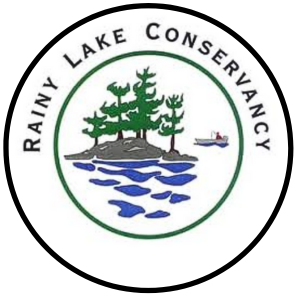
Project Accomplishments:
- Secured Long-Term Habitat Protection — Facilitated the transfer of a 39.53-hectare conservation easement on Goose Island to the Rainy Lake Conservancy (RLC), ensuring permanent protection of one of the last undeveloped boundary waterways in Canada.
- Strengthened Regional Conservation Network — Integrated Goose Island into an existing network of protected lands within the Rainy Lake South Arm Conservation Reserve, enhancing ecological connectivity and stewardship capacity through RLC’s ongoing monitoring program.
- Preserved Critical Forest and Wetland Ecosystems — Protected rare Red and White Pine forests and diverse wetland habitats that support numerous species of conservation concern, contributing to Ontario’s strategy to safeguard declining native pine ecosystems.
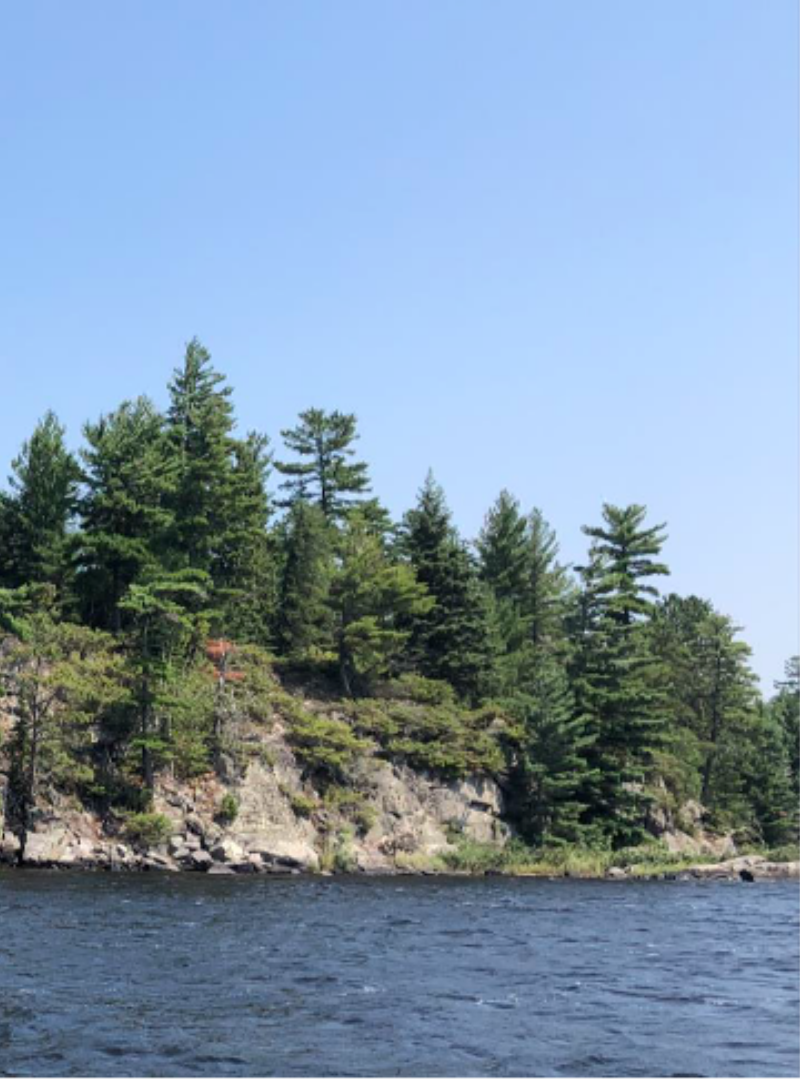
Corridor Appalachien – Carrière 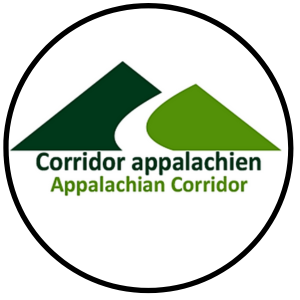
Project Accomplishments:
- Expanded Protected Area Network — Secured permanent protection of 25.56 ha, connecting to an adjacent 29.14 ha conservation property, strengthening ecological connectivity within the Sutton Mountains massif.
- Preserved Key Wildlife Habitat — Safeguarded critical heron nesting zones, wetlands, and riparian areas that support numerous species at risk in the Northern Green Mountains region.
- Maintained Regional Biodiversity — Ensured the integrity of a 10 km² unfragmented forest ecosystem, protecting essential habitats against growing development pressures.

Société de conservation du mont Brome – Plante – Mont Brome 
Project Accomplishments:
- Protected Rare Forest Ecosystem — Permanently conserved 6.83 ha of high-value forest habitat, including an Exceptional Forest Ecosystem (EFE) hosting threatened species like ginseng and wild leek.
- Enhanced Ecological Connectivity — Strengthened the conservation corridor between Mount Brome and Mount Shefford, safeguarding biodiversity within one of Quebec’s most ecologically significant mountain regions.
- Expanded Community Stewardship — Launched the “Nature Guardians” eco-citizen guide to educate residents and trail users on biodiversity protection and responsible coexistence with natural environments.

Haliburton Highlands Land Trust – Hadlington Reserve 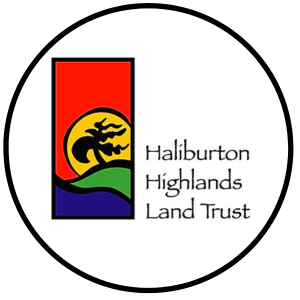
Project Accomplishments:
- Secured Critical Habitat for Species at Risk — Documented four Species at Risk and identified suitable habitat for 14 more within the 40-hectare Hadlington Reserve, ensuring targeted conservation within the ecologically rich Highlands Corridor.
- Enhanced Habitat Connectivity in a Key Wildlife Corridor — Advanced efforts to protect the 100,000-hectare Highlands Corridor, linking provincial parks and wetlands to support biodiversity, climate resilience, and government conservation goals (e.g., 30 by 30 targets).
- Strengthened Local Conservation Leadership — The Haliburton Highlands Land Trust expanded its protection footprint to 250 ha of secured habitat and stewardship over 2,000 ha of private lands, positioning the Hadlington acquisition as a vital step toward long-term ecological integrity.

Fondation pour la Conservation et la Protection Environnementale du Bassin Versant du Lac des Sittelles – Acquistion 2024-2025 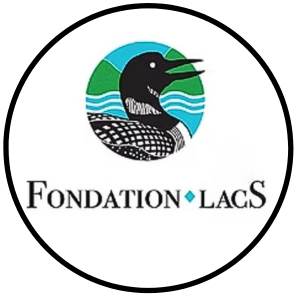
Project Accomplishments:
- Protected Key Watershed Lands — Acquired multiple lots within the Lake des Sittelles–Lake Memphremagog watershed to reduce erosion and runoff impacting local lakes.
- Expanded Conservation Network — Increased total protected lots to 116, safeguarding wetlands, steep slopes, and sensitive wildlife habitats.
- Strengthened Community and Government Partnerships — Advanced conservation goals with support from the Municipality of Austin, local partners, and Canada’s Ecological Gifts Program.
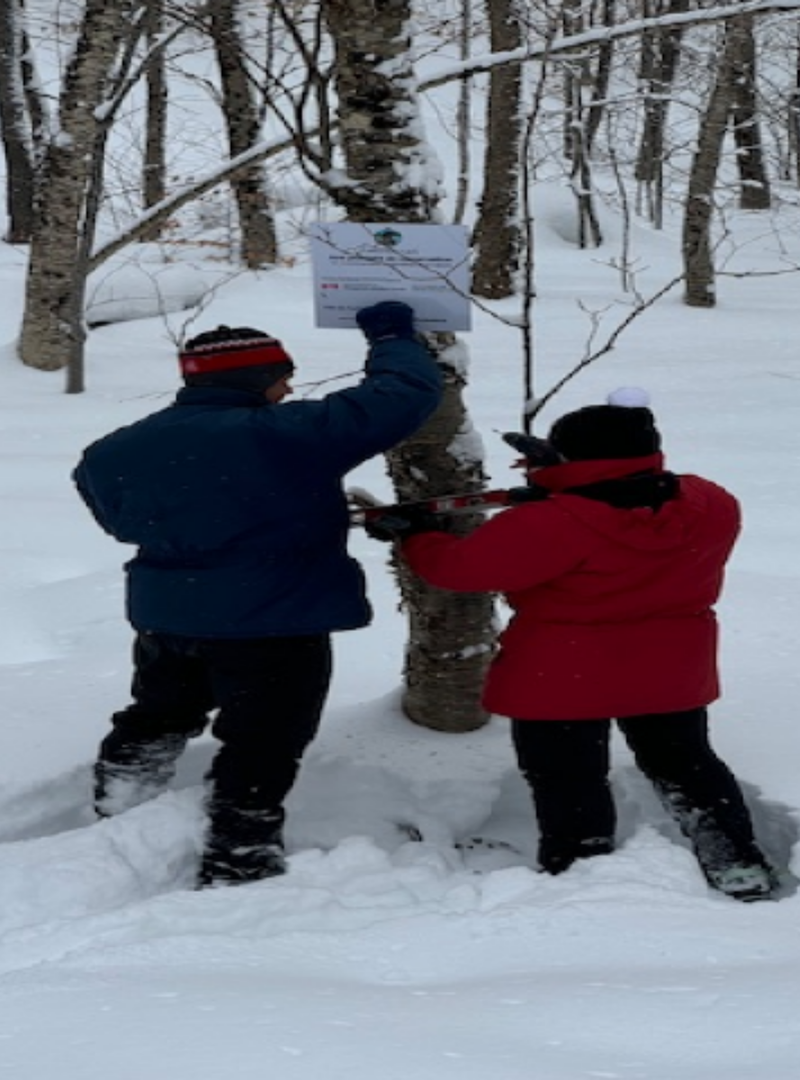
rare Charitable Research Reserve – Old Mill Wetland 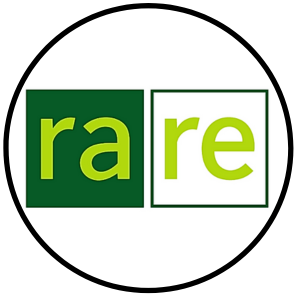
Project Accomplishments:
- Protected Ecologically Significant Wetland — Secured long-term conservation of the 40 ha Old Mill wetland and surrounding forest through a planned donation to rare Charitable Research Reserve by Broccolini, ensuring permanent habitat protection adjacent to a provincially significant wetland.
- Enhanced Hydrological Health and Biodiversity — Implemented stormwater management improvements to restore natural water levels and prevent contamination, supporting recovery of wetland vegetation and wildlife species affected by habitat isolation and drying.
- Restoration and Stewardship Initiatives — Developed a reforestation and stewardship plan to replace ash canopy lost to Emerald Ash Borer with native species, improving ecological resilience and long-term biodiversity.

Greenough and North Bruce Wilderness Alliance Inc. – Simon Bay Project 
Project Accomplishments:
- Protected Ecologically Significant Shoreline Habitat — Acquired and permanently conserved 19.6 acres (7.9 ha) of Lake Huron shoreline, designated as a Provincial Area of Natural and Scientific Interest (ANSI), preventing residential development and maintaining ecological connectivity on the Northern Bruce-Saugeen Peninsula.
- Safeguarded Species at Risk and Rare Ecosystems — Preserved diverse habitats including fen, alvar, dune, and coniferous forest ecosystems that support Eastern Massasauga Rattlesnake, Little Brown Myotis, Northern Myotis, Red-headed Woodpecker, and several provincially rare lichens and plants such as Ram’s-head Lady’s-slipper.
- Enhanced Climate and Ecological Resilience — Maintained a carbon sink capacity of 78 tonnes CO₂/year, protected fish spawning and nursery habitat identified by the Saugeen-Ojibway Nation, and strengthened biodiversity within a vital Great Lakes coastal corridor.
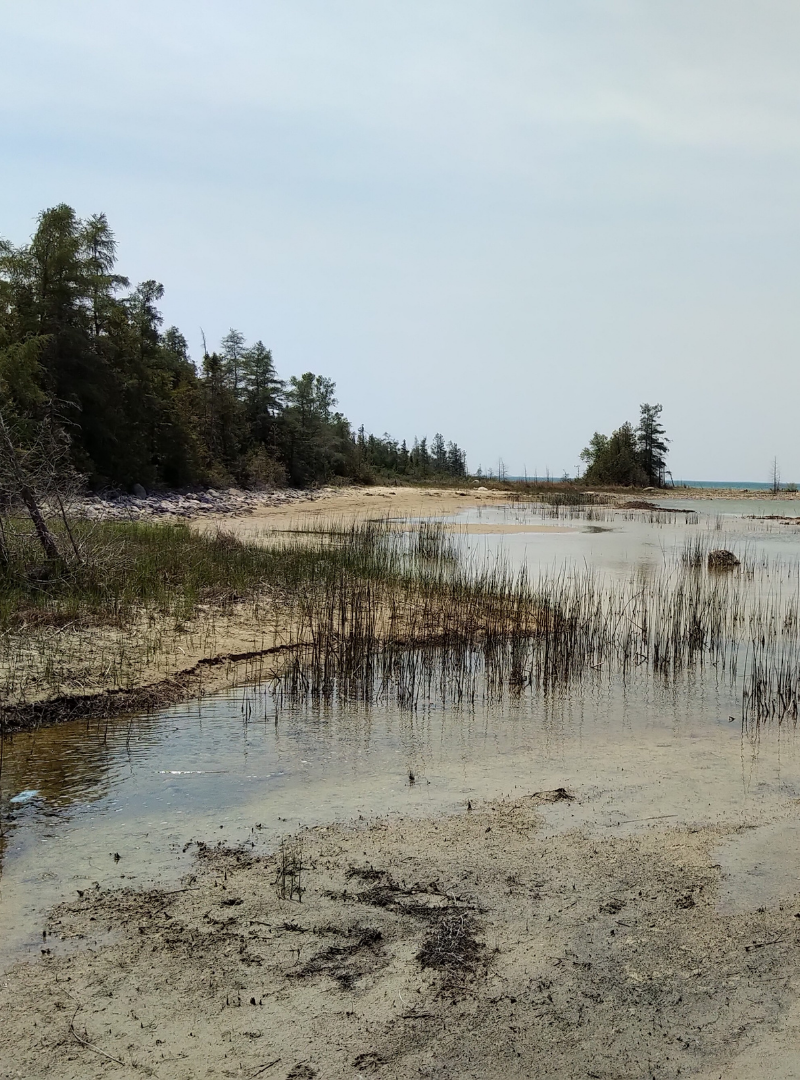
Connexion Nature – Propriété Benoît 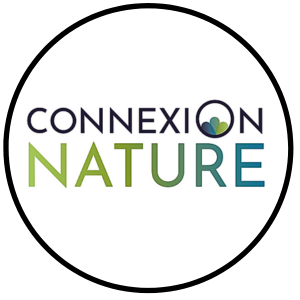
Project Accomplishments:
- Secured High-Value Natural Habitat: Acquired and protected 18.56 ha within the Mont Saint-Hilaire Biosphere Reserve, expanding connected conservation lands to 25 ha.
- Protected Species at Risk and Wetlands: Conserved habitat for over five species at risk and safeguarded 10+ ha of wetland ecosystems.
- Enhanced Regional Connectivity: Strengthened forest corridor conservation in the Montérégie region, preventing habitat fragmentation and supporting long-term biodiversity.

Greenough and North Bruce Wilderness Alliance Inc – Simon Bay 
Project Accomplishments:
- Secured Long-Term Legal Protection:
The 19.6-acre Farmington Woodlands Nature Area will be formally protected under the PEI Natural Areas Protection Act (NAPA), ensuring permanent conservation through a restrictive covenant that safeguards the land in perpetuity. - Integrated into National Conservation Frameworks:
Once designated, the site will obtain an IUCN protected-area classification and be registered with the Canadian Council on Ecological Areas (CCEA), contributing to Canada’s Target 1 (30 by 30) national conservation goals. - Protected Ecological Value:
The property encompasses natural forested and wetland ecosystems that provide vital wildlife habitat and meet provincial criteria for designation as a Natural Area, ensuring its long-term ecological integrity.
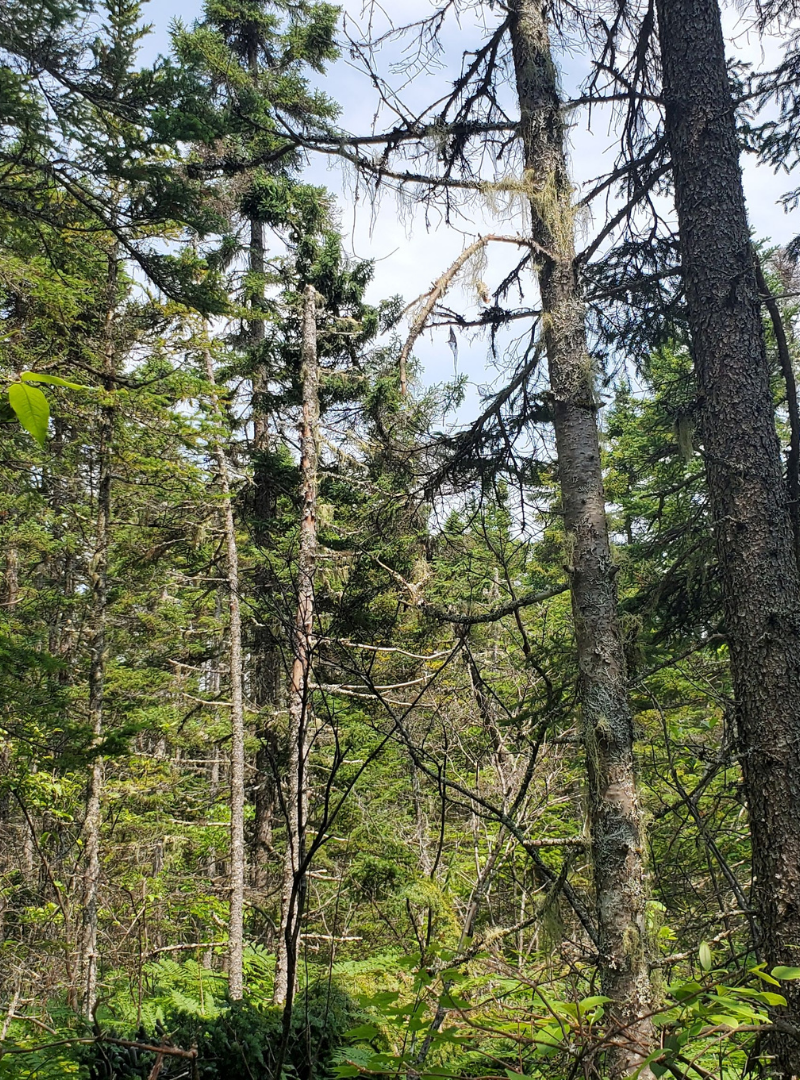
Island Nature Trust – Farmington 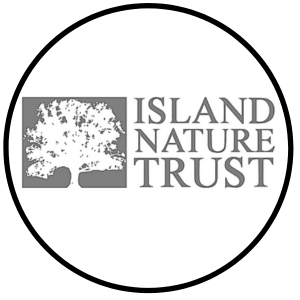
Project Accomplishments:
- Secured Ecologically Significant Habitat:
Acquired 140 acres (56.6 ha) of ecologically rich peatland, forest, and salt marsh habitats in the Percival River region, connecting to over 1,000 acres of protected lands and preventing future peat harvest or development. - Strengthened Cultural and Ecological Networks:
Preserved the Mi’kmaq heritage site “Unikansuk” (Portage Trail) and enhanced landscape connectivity across INT, provincial, and Ducks Unlimited protected areas, contributing to PEI’s biodiversity and cultural conservation goals. - Advanced Long-Term Protection and Climate Goals:
Property to be designated under the PEI Natural Areas Protection Act as the Portage Bog Natural Area, ensuring permanent legal protection, carbon sequestration, and progress toward provincial (7%) and national (30×30) conservation targets.
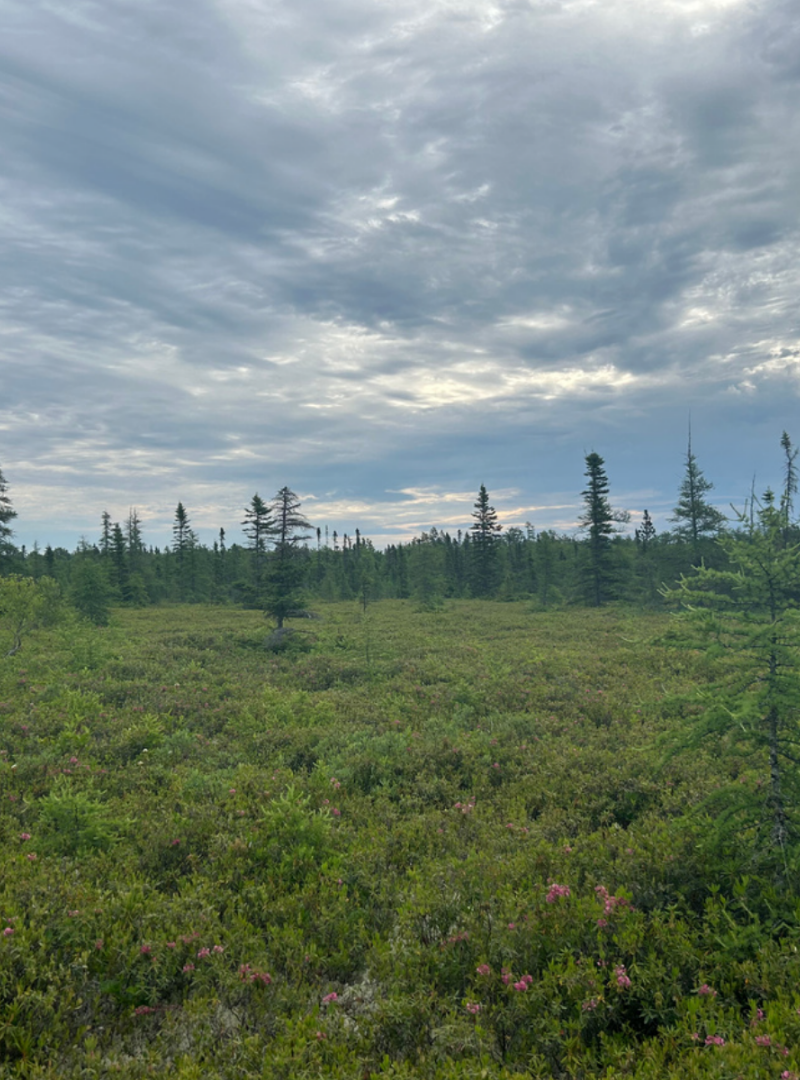
Long Point Basin Land Trust – Rebry Reserve 
Project Accomplishments:
- Secured Critical Habitat Protection:
Protected a Provincially Significant Wetland with an embedded cold-water stream, safeguarding habitat for multiple species at risk and strengthening ecological resilience in the Long Point Basin region. - Enhanced Landscape Connectivity:
Acquisition expands forested corridors and interior forest cover, linking with adjacent Norfolk County biodiversity reserve lands to create a larger, connected protected area. - Advanced Restoration and Water Quality Goals:
Planned restoration of marginal agricultural fields will reduce soil and chemical runoff, improving Lake Erie watershed health and supporting long-term biodiversity and water quality improvements.
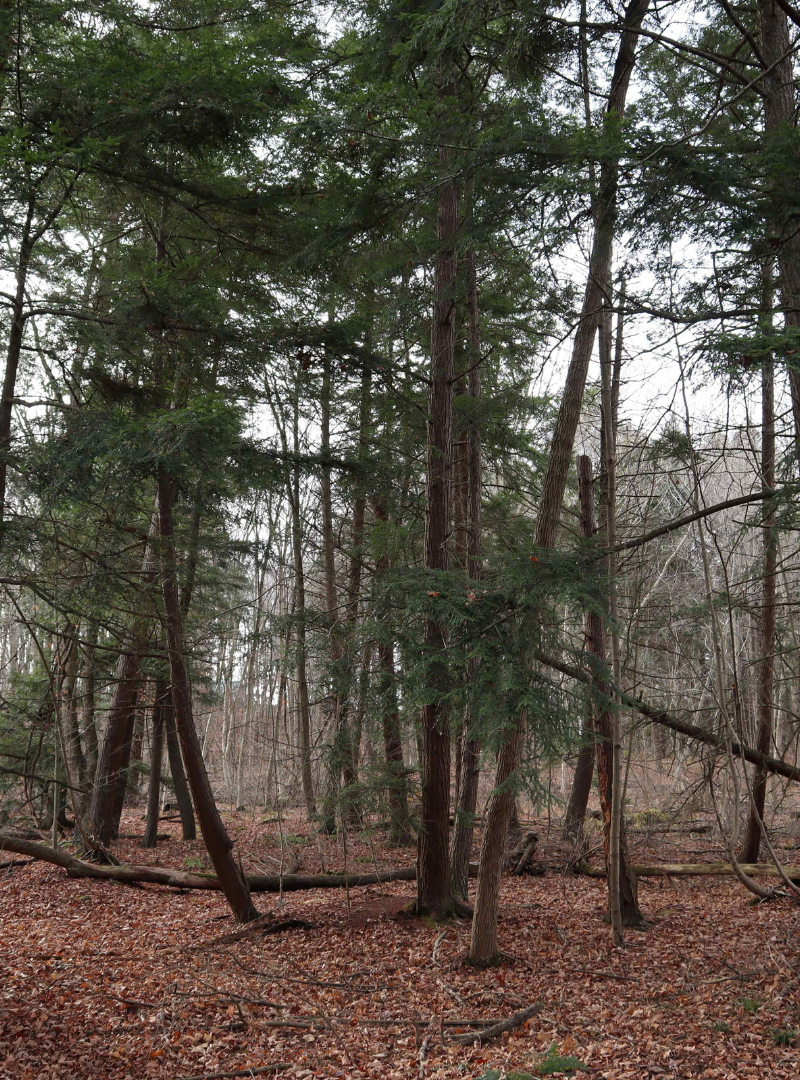
The Couchiching Conservancy – Agnew MeInyk Nature Reserve 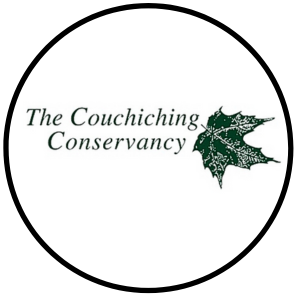
Project Accomplishments:
- Secured Long-Term Habitat Protection:
The 39.28-acre Agnew-Melnyk Easement permanently protects mixed woodland, wetlands, and meadows within the Hogg Creek Watershed, part of the ecologically significant Oro Moraine that supports major regional water systems. - Enhanced Biodiversity Conservation:
The property provides critical habitat for diverse species, including Snapping Turtle, Red-bellied Snake, Bobolink, Eastern Meadowlark, and native orchids such as Showy Lady’s Slipper, contributing to species-at-risk protection. - Strengthened Land Trust Stewardship:
The full donation of the easement to The Couchiching Conservancy ensures permanent conservation ownership, reducing future enforcement challenges and securing this ecologically valuable land for future generations.

Land Conservancy for Kingston, Frontenac, Lennox and Addington – St Andrew Narture Reserve, Previously Koshel Garbraith 
Project Accomplishments:
- Secured Significant Habitat Protection:
Initiated acquisition of two adjacent properties totaling nearly 30 hectares, protecting 690 metres of shoreline at the south end of St. Andrew Lakes. - Advanced Legal and Technical Steps:
Submitted Ecological Gifts Program applications and Baseline Documentation Report (September 2024); property appraisal pending to complete the acquisition process. - Conserved Biodiversity and Species at Risk:
Identified ten species of conservation concern, including Endangered Butternut and Black Ash, highlighting the site’s ecological importance for long-term habitat preservation.
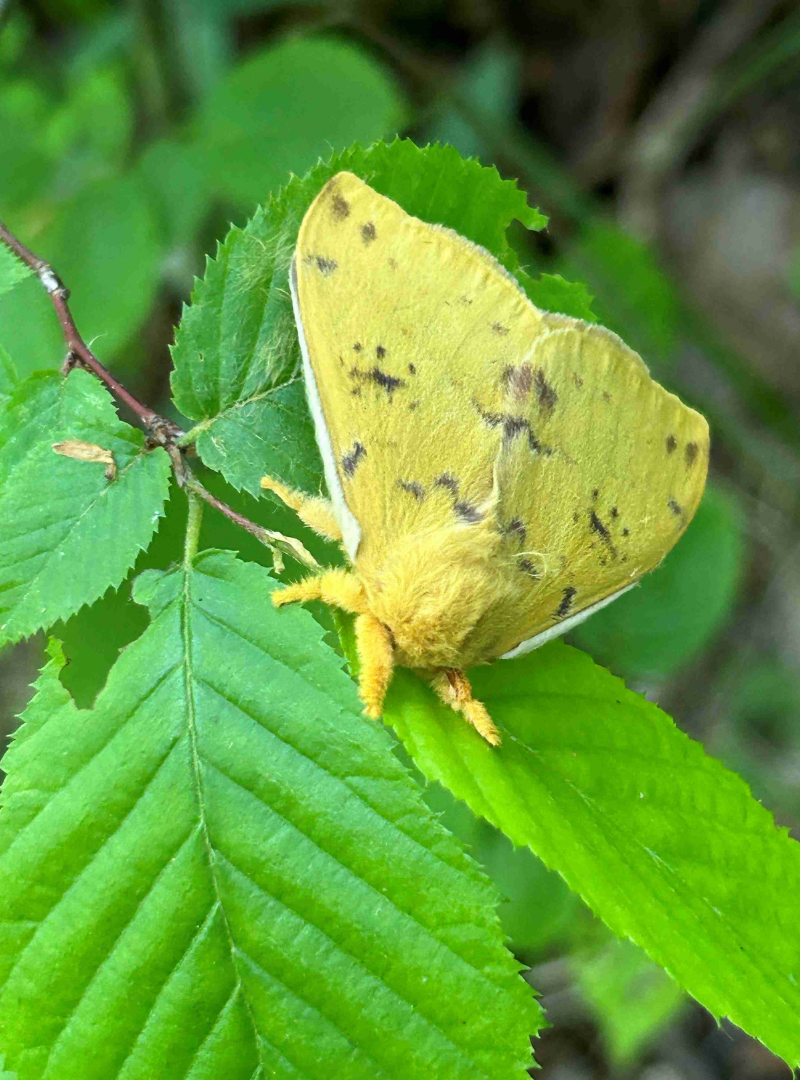
Huronia Land Conservancy – Cedar Ridge 
Project Accomplishments:
- Strengthened Regional Connectivity:
The property, located within the Christian Channel Regional Life Science ANSI, connects via contiguous forest to the Thunder Beach West ANSI (940 m) and links multiple provincial and regional ANSIs within the Greater Golden Horseshoe Natural Heritage System. - Protected Critical Wildlife Corridor:
Preserves essential habitat for Eastern Foxsnake and Massasauga Rattlesnake, supporting species movement between forest, lake, and wetland systems along Georgian Bay’s eastern shore. - Advanced Climate Resilience and Biodiversity Goals:
Contributes to a nationally recognized climate corridor, facilitating north–south wildlife movement and enhancing landscape-level connectivity and adaptation to climate change in southern Ontario.
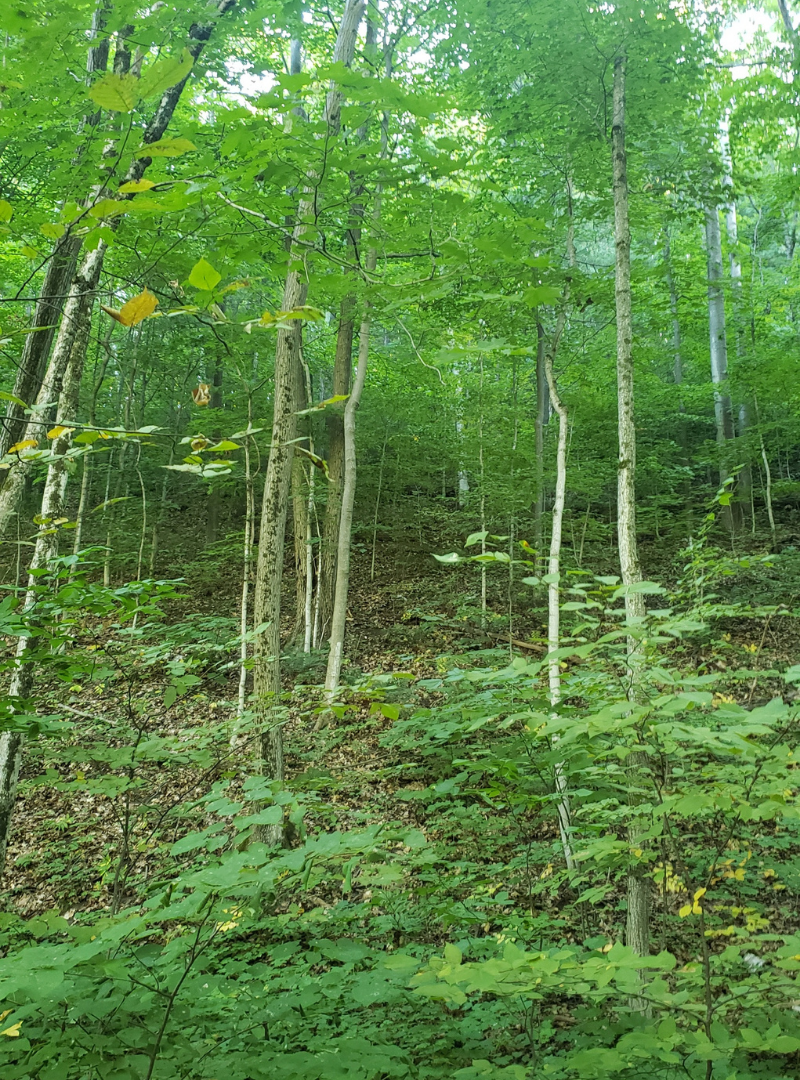
The Couchiching Conservancy – Eldridge Nature Reserve 
Project Accomplishments:
- Expanded Ecological Connectivity:
The Eldridge Nature Reserve strengthens a key wildlife corridor along the Black River, linking Queen Elizabeth II Wildlands Provincial Park with nearby Reid, Marley, and Taylor Nature Reserves. - Protected Habitat for Wide-Ranging Species:
Enhances habitat for American Black Bear, Fisher, and Moose, allowing these species to expand their territories into newly protected lands. - Supported Biodiversity and Species at Risk:
Provides ideal breeding habitat for smaller wildlife and is expected to support up to 26 species at risk, including Monarch butterflies and Wood Thrushes.
